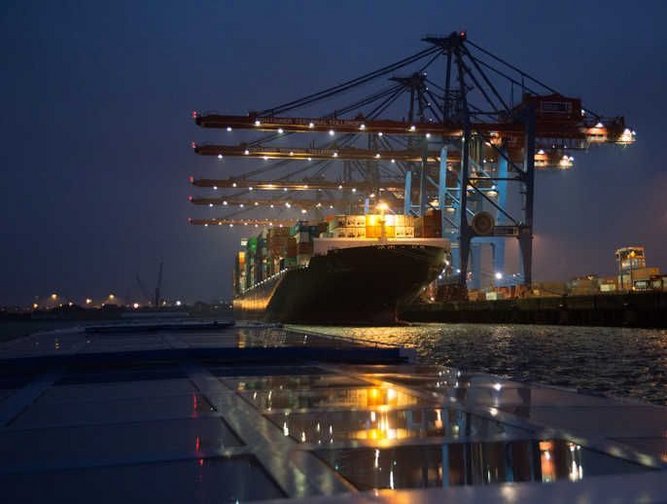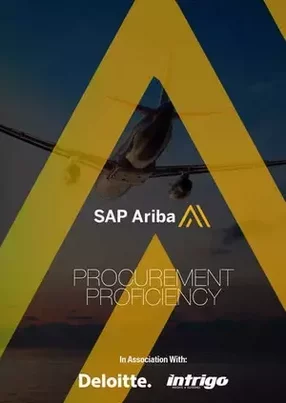SAP Ariba continues to provide procurement proficiency amid a backdrop of transformation
The very nature of procurement and the supply chain is changing. Advancements in technology and innovation have significantly shortened the lifecycle of products, forcing suppliers and procurement functions to transform their approaches.
As procurement and supply chain has changed, so too has SAP Ariba. Speaking at SAP Ariba Live in Las Vegas earlier this year, Marcell Vollmer, the company’s Chief Digital Officer, looked to the future of procurement and more importantly, how it will continue to move beyond delivering cost savings and process efficiencies.
“For the last two decades, procurement has been on a journey that has led to dramatic transformation. But the journey is just beginning,” Vollmer said. “Over the next 10 years, companies will face more opportunity and disruption than ever. And procurement will play a critical role in maximising these opportunities to create business value. In embracing digital technologies and strategies, procurement can reimagine the function and beyond delivering cost savings and process efficiencies, fuel innovation and market advantage.”
Mark Schenecker, VP Supply Chain, Procurement & Networks with SAP Ariba, has seen this transformation happen first hand in large scale organisations, both in culture and in practice.
With SAP, Schenecker plays a key role in working on the implementation of industry-leading cloud-based applications to some of the world’s largest companies in order to better collaborate with a global network of partners.
Vollmer’s sentiment is echoed by Schenecker, who feels that as the procurement transformation journey will only continue to develop further, now more than ever companies must embrace a far more collaborative approach in order to keep up.
“Typically, in the supply chain space, the conversation will start around demand planning,” says Schenecker. “From that, you make up a supply plan based on your customer requirements and then you share that with the suppliers. This is often referred to as forecasting.
“Forecasting, though, is very hard to get right because there’s some level of variability that you just can’t control.”
Schenecker points to large companies that tackle this challenge of forecasting demand through collaboration. Rather than spending resources through inventory buffers to mitigate risk in supply, or create more precise forecasting, companies will work collaboratively with their suppliers in order to respond to a change in demand instantaneously.
In the ever-changing pace of product cycles, this is crucial to being able to deliver true value to the supply chain.
“It’s about making your supplier network tick through collaboration,” Schenecker says. “People are understanding this more and more. It’s about responding quicker, and more cost effectively and how we can create this near real-time instantaneous communication with our suppliers and treat them as an integral part of our supply chain and network.”
SAP Ariba works with companies in creating solutions in order to establish and build this “tight knit” collaborative network. Millions of companies all over the world use SAP’s cloud-based network to manage their business relationships and allow their customers to shop, share and save.
This network is what enables that true collaborative approach. It allows buyers and suppliers to collaborate on transactions, manage their entire procurement process from source to settle, all the while controlling costs, finding new sources of savings and building an ethical supply chain.
One of the key advantages in this collaboration is reducing lead times. A typical plant, when processing an order, could have a month of supply of parts. These parts are either stored by a supplier, sometimes via a 3PL, or stored on the factory floor or warehouse. This is often inconsistent and will vary from product to product, part to part.
“If we run this through our tight knit collaboration you are looking at significantly reducing inventory,” says Schenecker. “Taking days or weeks of supply of inventory out of the supply chain will reduce costs. These inventory cost savings are critical to reducing the cost of the finished goods. It’s a real big move on the profit line.”
Supply chain and procurement processes are often complex, taking into account direct spend (the materials that go into the makeup of a product), as well as indirect spend (services such as facilities management) which, when multiplied across numerous manufacturing lines, represents a significant investment.
Schenecker points to the need for change management and how one of the biggest moves in product design is the intimate integration of procurement. Engineers or designers are sometimes in a position where they will purchase parts based primarily on their familiarity with the part or vendor rather than aggressively looking for the lowest cost at the highest quality.
“We are witnessing a change in the integration of procurement with design,” he says. “Whereas before it would be a case of sourcing parts to an individual engineer’s familiarity, or just looking at supply chain optimisation, the challenge was that the supplier relationship was owned by the company or by the procurement team not necessarily engineering.
“Now, it is much more individual and much more owned and dictated by the joint efforts of engineering and procurement.
“The lifecycle of products is much shorter today and so change management revolves primarily around speed, which is incredibly difficult to manage. It can be overwhelming, but it’s about training, coaching and understanding how to leverage the entire process in order to better understand the way that you will work with suppliers.”
Through the cultural change and the way in which work is managed, Schenecker notes that the role of the designers, buyers, planners, suppliers, right through the entire supply chain is beginning to converge.
Historically, the different suppliers throughout the supply chain process would operate as entirely separate entities. But in this time of shorter product lifecycles, which will only continue to get shorter in the near future, the whole supply network is moving from a serial to a parallel model.
“What happens now is design, sourcing, ramp to production are all working simultaneously,” Schenecker says. “You, your network, your suppliers, and your buyers and planners are all working in parallel.
“Teams don’t work in a serial fashion anymore, they work in parallel and it all overlaps, with each other area.”
This echoes back to the importance that Schenecker places on the planning process, as companies are now looking to reuse parts and streamline the introduction of new parts much more than ever before.
See also:
- Mann+Hummel: Leveraging IoT, MVP and customization to deliver revolutionary filtration products
- Yamana Gold digitises the gold sourcing world through blockchain technology
- Pemex, technology and the 2017-2021 Business Plan: An interview with CIO Rodrigo Becerra Mizuno
“Today, companies are constantly cannibalising their products in order to continue to win in the marketplace,” he says. “With the speed at which the market is changing, you have to, otherwise someone else will.”
In the procurement and supply chain space there is a firm understanding that you can only be as good as your supply chain. The SAP Ariba Network, which has millions of customers and suppliers from all over the world, sees beyond the realms of being just a supplier and what it means to really be a partner.
“Sure, you look for a supplier and ensure that they make the right product, the right parts, to the right timescale and right cost,” he says. “But now you have to look at what it actually means in terms of the actual cost to do business with that supplier.”
If a supplier has process inefficiencies or does not have the required integration capabilities in this ever-demanding environment of speed, then the buyer has to look at what effect that will have from a cost perspective.
“Inefficiency for example, will bring inventory buffers into place to cover up a lack of proficiency in communications in the supply chain, which of course means added cost,” says Schenecker.
This approach has changed the way in which buyers evaluate suppliers, with the quality and pricing of parts being equally as important as the ability to perform. Performance and performance measurement of suppliers has become as crucial than the supply itself.
Working with suppliers has become centred much more around supplier management than ever before and through close collaboration, SAP Ariba helps buyers to navigate this changing landscape to truly implement new processes with little disruption.
SAP Ariba has worked with Intrigo and Deloitte, integration specialists with deep supply chain expertise, as Schenecker describes. These two companies understand the SAP Ariba network, the procurement business processes, complex supply chains and SAP Ariba solutions, and have successfully helped the integration of new process and new ways of working through close collaboration.
Other key partners include Liason, an integration specialist for the buyers that don’t use SAP systems, but through the work of the company can seamlessly integrate to the SAP Ariba Network.
SAP also calls upon the work of EY and Deloitte in order to look closely at integration from the change management level, approaching the transformation of supply chain with the view of asking the question ‘how do you implement for success?’
“Our partners have been key to us,” says Schenecker. “And the best thing is, they don’t work on just the one area. Sure, you’ll see Intrigo working on integration of SAP Integrated Business Planning, ERP and Ariba with Deloitte running change management, but all of our partners operate under the wider scope of a larger transformational journey.”
As SAP continues to redefine its supply chain network in order to continue to provide true value to its supply chain and procurement partners, the question then becomes one of how to keep up the pace with the rapidly changing procurement landscape.
After all, today’s best practice will not always be tomorrow’s.
“Customers, and not just ours but our competitors, drive us to higher levels of innovation,” says Schenecker.
“But we intend to lead, not to follow. Sure, we look to broader market to see what’s happening, but in terms of procurement and supply chain, SAP Ariba is setting the tenor, the direction and the trend for the current market. And we will continue to do just that.”



